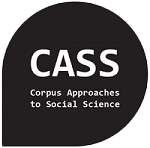In 2006, The Independent published an article advertising to its readers some of the islands off the coast of New Zealand as ideal holiday destinations. Amongst descriptions of various idyllic landscapes, cultural eccentricities and tourist attractions, the author warns readers of some of the local fauna:
“Wildlife-wise, there are not just hammerhead sharks in these parts, he told me, but school sharks and mako sharks – the paranoid schizophrenics of the shark world (The Independent, 2 September 2006).
What is meant by the paranoid schizophrenics of the shark world’? Surely not that a species of shark is affected by a chronic mental disorder, typically characterised by delusions and auditory hallucinations?
I think most readers would agree that the author does not mean this literally. In fact, there is currently no evidence that sharks, or other animals besides humans, experience symptoms of psychosis. Instead, given some of the shared characteristics of sharks and ‘paranoid schizophrenics’ in our background knowledge, we can infer that by paranoid schizophrenics of the shark world, the journalist means ‘highly dangerous sharks’. In other words, our understanding of what is meant rests on the assumption that paranoid schizophrenics are aggressive and violent members of the human race.
So where have we learnt to believe that people with schizophrenia are more violent than other people? Probably not from personal experience or credible evidence. Statistics repeatedly show that people with schizophrenia are not significantly more likely to commit violent crimes than the general population (Kalucy et al, 2011; Fazl and Grann, 2006). Other studies report that people with schizophrenia are instead more likely to be the targets of violence (Wehring and Carpenter, 2011).
One likely explanation is the media, which has been shown to frequently represent people with schizophrenia as aggressive, unpredictable killers who are both ‘mad’ and ‘bad’ (e.g. Cross, 2014, Clement, 2008, Coverdale, 2002). These misrepresentations are particularly alarming given the influence of the media on public attitudes. Since members of the public are unlikely to have first-hand experiences with people with schizophrenia, they obtain almost all their understanding of, and attitudes towards, people with schizophrenia from the increasingly ubiquitous media (Angermeyer et al, 2005). People with the diagnosis themselves are given little choice but to internalise these malign stereotypes, which have been found to deter some individuals from seeking medical help and sadly increasing the risk of suicide (Harrison and Gill, 2010; Wilkinson, 1994).
For my doctoral thesis, I have spent the last two years examining the ways in which schizophrenia is portrayed in the U.K. national press between 2000 and 2015. I pay attention, not only to how people with schizophrenia are misrepresented as violent, but also to other, less well-documented representations. For instance, my project has also led me to consider cases where the press paint a picture of people with schizophrenia as having special and unexplained creative powers, serving to make them separate and different from ‘ordinary folk’, and perhaps resulting in expectations that may be difficult to meet.
In order to consider the most frequent portrayals and how they might have changed over time, I am examining all articles published by 9 U.K. national newspapers –five tabloids (The Express, The Mail, The Mirror, The Star, The Sun) and four broadsheets (The Guardian, The Independent, The Telegraph, The Times) – published between 2000 and 2015 that refer to a diagnosis of schizophrenia in some way. This comprises 16,466 articles and 15,134,066 words which I then analyse for frequent patterns using a combination of statistical computer tools and manual linguistic analysis.
As a linguist, I pay close attention to how positive or negative portrayals are realised through subtle choices in language. These can reveal the origins of various misconceptions. For instance, 14 of the top 25 ‘doing’ words that occur unusually frequently in the vicinity of the word schizophrenic in my data refer to violent behaviours. In other words, ‘schizophrenics’ frequently attack, behead, punch, murder, rape, stab and slash others, or at least pose a risk or threaten them.
A MACHETE-wielding schizophrenic who slashed two guards in a rampage through MI5’s HQ was locked up in a mental health unit indefinitely yesterday. (The Sun, 22 June 2005).
A paranoid schizophrenic beheaded his flatmate in a frenzied attack after suffering from delusions that he was being persecuted, a court has heard. (The Mirror, 2 December 2013).
The frequency with which schizophrenic occurs in the vicinity of violent action words help explain why someone might have chosen to characterise the school and mako sharks as the paranoid schizophrenics of the shark world, and how readers were able to make sense of this analogy.
Overall, it is clear that the media have a responsibility to offer more accurate and balanced representations of schizophrenia. In utilising a characteristically language-oriented approach, the goal of this research is to offer media institutions practical ways to improve their reporting of schizophrenia by identifying potentially problematic choices in language and suggesting more balanced and accurate alternatives.
If you have any suggestions or observations, or for any reason would like to get in touch, please contact me via my email: j.balfour@lancaster.ac.uk
